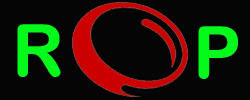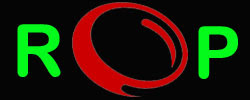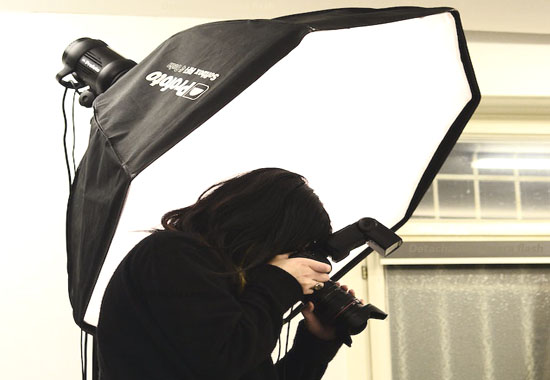A detachable camera flash is an ultimate gadget that may improve the way you think about taking pictures. It is also referred to as a Speedlight and is frequently just one of the tools to new photographer’s purchase. After purchasing their first DSLR, many aspiring photographers start to find a reliable detachable flash. It's difficult to resist the draw of a great third-party flash item.
Considerations while purchasing the finest detachable cameras flash
With a detachable flash, you may adjust the brightness and direction of the light it produces, unlike built-in pop-up flashes. You may reflect light off the ceiling or the back wall by simply rotating the flash head in the other direction. In many situations, this produces a much softer, more attractive light than a direct blast. A bouncing flash can frequently be used exclusively by wedding and event photographers to illuminate an entire space.
Detachable flashes are useful lighting equipment to bring on location because they are portable and less expensive than studio strobes. However, under strong lighting, the built-in flash of your camera usually lacks the strength to compete with the sun. With the best detachable camera flashes, you'll have more creative lighting options and greater control.
Reviews And Suggestions From Clients
1. LightPix Labs FlashQ Q20II
We now have LightPix Labs FlashQ Q20II, which is incredibly extremely lightweight. This on-camera flash is a manual exposure lighting solution with capabilities for trigger and control that are similar to those found in name-brand products. The Q20II has a slim rectangular shape and that can tilt in 0-, 45-, 60-, 75-, and 90-degree click intervals, allowing it to direct light in novel ways. It also comes with gel filters. Even better, the Q20II is battery-operated and functions as a detached camera flash that can be wirelessly activated with the included remote. It's vital to remember that the Q20II functions best with smaller cameras due to its compact size. Recycle duration varies from 6 to 7 seconds depending on the battery, thus for added convenience, we suggest getting a pack of rechargeable batteries.
Profoto B10X Plus Off Camera Flash Duo Kit
2. Canon and Nikon GVM TTL Li-Ion Camera Flash
Additionally, we have the GVM Y1 TTL Li-Ion camera flash which is compatible with all Canon and Nikon cameras, offers wide exposure with a gentle, progressive falloff that makes it ideal for portrait shooting. Even if they're not even included in the light itself, this flash may support colorful gel filters for entertaining lighting experimentation, just like the Q20II. A 2000mAh lithium-ion battery powers the Y1 and boasts a recycle time of 2.1 seconds at full power. This product is a wonderful substitute for more expensive third-party flashes like the Godox V1 or the Profoto A10. Both in terms of form and functionality, the Y1 is comparable to both flashes.
3. Sunpak DF300U flash compatible with Canon and Nikon
The DF3600U Flash from Sunpak immediately comes to mind when discussing typical third-party flashes as a convenient, all-purpose strobe that is completely compatible with Canon E-TTL / E-TTL II and Nikon i-TTL automated exposure systems. This flash has an 18-180mm zoom range, tilts and spins for bounce flash, and has an integrated diffuser panel to project a wide-angle light. The DF3600U, like our former recommendations, may be configured as a wireless slave and utilized as a detachable camera flash.
It functions as a manual flash with complete TTL/i-TTL functionality, high-speed sync, a battery, and a PC port for the price. This reliable, understated light performs admirably indoors while producing results produce results that are very comparable to name-brand flashes. In terms of appearance, applications, and performance, it is most similar to the Q20II that was previously discussed. However, it is larger and designed to be used with larger cameras.
4. Usb manual flash Bolt VD-420
The all-manual VD-420 is suitable for any standard hot shoe and has a pricing that encourages numerous flash purchases. It offers amazing power output control that ranges from 1/128 to full power in eight full-stop increments. Recycle periods range from 0.1 to 5 seconds, depending on the power level, and can be sped up by using an external battery pack instead of the standard 4 readily available AA batteries. The VD-420 functions as an optical slave and, like the DF3600U, is capable of diffusing and reflecting light. However, it stands out for having two optical modes enabling distinct flash triggering. With its very own transmitter point and tripod stand, it functions as a potent detachable camera flash and is the perfect addition to multi-flash setups. This flash is strong, understated, and powerful. It is user-friendly for beginners and an excellent addition to any kit with a wide range of useful uses. Know about action camera body mount also
5. Yongnuo YN-568EX III Speedlite camera flash
Yongnuo is a brilliant suggestion to check out if you're seeking for the greatest third-party flashes to compete with the high-end features provided by other contemporaries. Regarding general design and functions, its YN-568EX III Speedlite roughly mimics Nikon's SB-5000, but at a far lesser price. It will function as a visual TTL striver for Nikon and Canon cameras and is completely compatible and consistent with Nikon's i-TTL technology. The flash can be wirelessly activated by an optical pulse, and recycling takes place in about two seconds at maximum strength.
The YN-568EX III's zooming bounce/swivel flash head covers 24-105mm lenses with a guide number of 190' at the 105mm setting. The strobe's settings are great, allowing you to adjust the intensity of your flashes using simple dials that are shown on an easy-to-read LCD. With its own stand, this flash can be used as a standalone camera flash for your kit. This is a good option to take into consideration if you're seeking for a strobe that stands out from the competition while being reasonably priced.
6. Compact Flash Nissin i40 for Nikon Cameras
The Nissin i40, a small, portable flash that is compatible with Four Thirds TTL cameras, Nikon, Canon, FUJIFILM, and Sony cameras, completes our list. This low-profile flash has a zooming, tilting, and swiveling head that can cover 24-105mm focal lengths. Even though it's a little more expensive than our other top choices so far, you get what you pay for a compact softbox, soft case, and flash stand for camera-flash applications. The i40 is notable for having a built-in daylight LED light with 9 output levels for up to 3.5 hours of video filming, making this flash a very versatile choice if you also want to start shooting videos.
Even though the manual dials on the i40 for modes and power changes do not light in the dark like control displays do, they are nonetheless quite well-designed and should appeal to individuals who dislike complicated digital menus or time-wasting toggling. The flash has an outstanding guide number of 131' at ISO 100 and the 105mm setting, which belies its modest size and shows just how powerful it is. You would struggle to find a better third-party flash for smaller mirrorless or DSLR cameras with high-speed synchronization, a built-in filter and reflector, and a capacity of 220 to 1,700 shots on a given set of 4 AA batteries.
7. Flash for a retro camera, Godox Lux Senior
The Lux Senior Retro Camera Flash from Godox is a truly unusual third-party alternative if you're looking for a strobe with a little vintage flair. It will bring tremendous panache to your upcoming session, party, or outing. This remarkably compact strobe is equipped with dials, knobs, and a foldable flash parabola, and it is small enough to be kept comfortably placed on any camera with a conventional hot shoe. Use the dials to correlate your ISO with apertures, power settings, and shooting distances, or select Auto Mode, which defaults to an f/2.8 shutter and ISO 100.
This USB-C rechargeable classic flash, which can give 150 flashes at full strength and has a recycle period of under 3 seconds, is a cool device that produces harsher light ideal for high fashion. With this Lux Senior, you can take lots of shoots very perfectly with perfect white balance, so we recommend you either adjust to Flash White Balance or add some gels to reach the color temperature you want.
Conclusion:
In the end, studio strobes are more expensive to play with than the best detachable camera flashes, which are one of the simplest ways to regulate brightness. When you are just starting out and amassing your equipment, a detachable flash is an essential piece of photography equipment. Learning how to use a detachable flash can teach you a lot about how light works and how lighting conditions have a significant impact on photography's aesthetics.
FAQs:
Q: Does every flash function on every camera?
Answer: Some flashes are manually operated and only require a small signal to activate. Those flashes usually function with almost any camera. However, you'll need anything made expressly for your camera if you want any automatic functions or wireless transmission.
Q: What is the lifespan of a detachable camera flash?
Answer: According to the brand you use, the flash life of your camera differs. Fresh batteries will function better in a camera flash than old, drained batteries will. Flashes that cost more money often last longer than less expensive models. Before any shot, if you want to use flash, it is always a good idea to change the batteries in your lights to ensure peak performance.
Q: When should a camera utilize its flash?
Answer: If you want greater flexibility over the lighting, use your camera's flash. For both interior and exterior photographers working in a range of shot styles, flashes are a convenient technology. Before using your flash throughout a concert or performance, make sure to check the regulations; larger theaters and performance spaces frequently have guidelines that expressly restrict using flash photography.






0 Comments